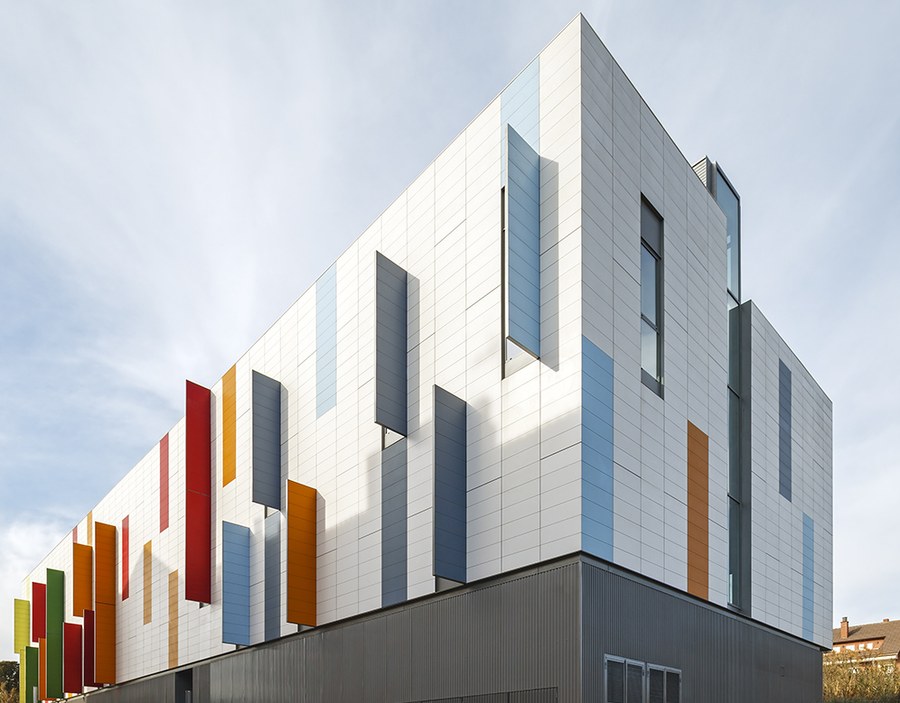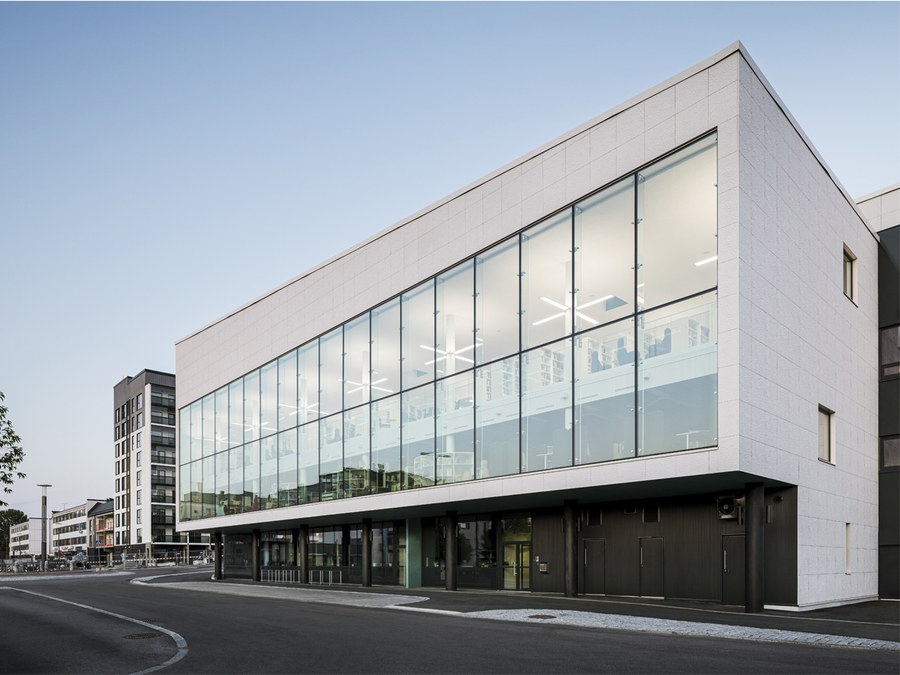MOLLET POLICE STATION COLOURED AND MADE ENERGETICALLY EFFICIENT WITH ULMA VENTILATED FAÇADE

The building has different sustainable elements, including the ventilated façade, which achieves energy consumption rates 49% lower than a building with similar characteristics.
The construction of the local MOLLET police station is the result of a contest opened for the construction of the central library (still not started) and the local police station on a plot owned by the municipality. The project presented by Taller 9s arquitectes was the winner of the contest.
CUSTOMISATION AND FULL SERVICE
The authors of the project, Oriol Cusidó and Irene Marzo, projected the police station with a ventilated façade made of polymer concrete. In the words of the ULMA technician, Maider Biain, “the main characteristic of this project is that it intended to maintain the same proportion of the porticos or hollows with the dismemberments of the façade. To achieve this, 3.5-mm (standard) horizontal joints were used with the 8-mm joint to highlight the verticality, making possible this visual effect of proportion and similarity. A 5-mm vertical joint was used. In addition, this project required a very accurate rethinking. Although for the height, we were able use a same 320-mm format in all rows, for the length, we were required to adjust the work, obtaining multiple formats, ranging between 900 mm and 1100 mm.”
The different colour options available in the line of ULMA Architectural Solutions were able to provide this coloured air to the building, an effect obtained through the metallic parasols lined with polymer concrete plates of different colours. The idea of the parasols was to provide the opening of the façade, integrating in it to provide continuity.
According to Oriol Cusidó, the architect responsible for creating the work, “the ULMA solution allowed us to respond to a trifold objective: the energetic improvement of the outer layer, the necessary guarantee of durability and, the aesthetic resolution of the building based on the combination of joints, parts, and colours. With the same plate, we addressed opaque sections and porticos, which are essentially stretches of the outer layer that have been opened.”
A key point in the project was the comprehensive service offered by ULMA, as well as the solution to all non-standard elements such as special boards, custom sizes, special colours, and integration of the plate into the structure of the parasols.
According to the architect of the project, “our experience with ULMA has been very good. During the project phase, the continued collaboration of its technical team allowed us to fit the idea of our project with the possibilities of the system and the initial budgetary limitations.” Lucia Zafra, a member of the technical team added: "We were able not only to address these elements, but also to give options to find a balance between the budget available with the architecturally desired effect.”
ENERGETICALLY EFFICIENT BUILDING
The ventilated façade made of ULMA polymer concrete, the plant cover, the installation of a field of thermal solar panels, the glazing study, and the solar protection elements allow the building to have an energy consumption 49% lower than that of an equivalent building.
The building of the police station is isolated from the street with more opaque façades and is open to the new public space, with a diaphanous glass façade. The workspaces have a view to park and a slat system to improve light comfort. Furthermore, a linear skylight was installed on the upper floor, optimising the light entering the central bay and facilitating ventilation.
The police station is one piece of a unitary project that, based on the dialogue and tension between the two facilities (police station and library), forms a new urban space, giving continuity to the surrounding parks.







